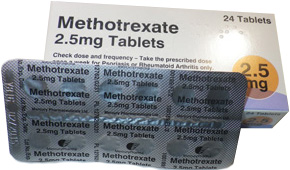Amantadine Overview
Amantadine is a medication with a multifaceted use profile, which includes the treatment of certain infectious diseases and specific symptoms of neurological disorders. Originally approved as an antiviral against influenza A, the indications for Amantadine have expanded over time. It now also plays a role in the management of Parkinson’s disease and drug-induced extrapyramidal reactions.
Action Mechanism
Amantadine exerts its effects through various mechanisms. As an antiviral, it blocks the replication of influenza A viruses by interfering with the uncoating of the viral RNA within infected host cells. In contrast, its activity in neurological disorders is thought to be linked to its influence on dopaminergic transmission. Amantadine enhances dopamine release, inhibits dopamine reuptake, and stimulates dopaminergic receptors. These pharmacological actions contribute to its efficacy in alleviating symptoms of Parkinson’s disease and other extrapyramidal syndromes.
Indications and Utilization
The primary indications for Amantadine include prophylaxis and treatment of signs and symptoms of infection caused by various strains of influenza A virus. Moreover, it’s beneficial for patients with Parkinson’s disease or those who exhibit unwanted side effects from other drugs that affect the central nervous system, such as antipsychotics, as it can relieve tremors and rigidity.
Dosing and Administration
Amantadine is administered orally with the dose tailored according to the specific indication, patient’s age, renal function, and presence of other medical conditions. Typically for influenza, a standard adult dosage might involve administration once or twice daily. In the case of Parkinsonian symptoms, dosing may require gradual increases based on therapeutic response and tolerability. It is critical to follow a healthcare provider’s dosing instructions precisely to maximize benefits and minimize potential side effects.
Contraindications
Amantadine is contraindicated in individuals with a known hypersensitivity to the drug or components of the formulation. It is imperative to take precaution when prescribing Amantadine to patients with a history of seizures, congestive heart failure, peripheral edema, or orthostatic hypotension. Special attention should also be given to those with renal impairment, as dose adjustment is necessary.
Interactions with Drugs
Amantadine may interact with several other pharmaceutical agents, potentially altering its effectiveness or leading to adverse effects. Common interactions include those with anticholinergic drugs, which can exacerbate certain side effects, and medications that influence renal excretion, which can alter Amantadine concentrations. It’s fundamental for both clinicians and patients to actively manage the medication regimen to prevent possible drug-drug interactions.
Adverse Effects
While Amantadine can be beneficial, it also has a spectrum of potential adverse effects. These can range from mild to severe and include, but are not limited to, dizziness, ataxia, confusion, insomnia, and gastrointestinal disturbances. Rarer, but more serious side effects such as neuroleptic malignant syndrome or severe skin reactions can also occur. Monitoring for adverse reactions is crucial throughout treatment with Amantadine.
Overdose Management
In cases of overdose, patients may experience heightened adverse effects such as arrhythmias, hallucinations, or hypotension. Immediate medical attention is vital, and treatment may involve symptomatic and supportive measures, including gastric lavage or hemodialysis in severe cases.
Special Populations
Amantadine’s safety and efficacy in certain populations, such as pediatric or geriatric patients, pregnant or breastfeeding women, and those with renal or hepatic impairment, require careful consideration. Dosing adjustments and thorough monitoring are particularly important in these groups to ensure safe use of the medication.
Usage Warnings
Amantadine comes with specific warnings related to its use. The medication has the potential to cause mood alterations, including depression and suicidal ideation. It may also exacerbate pre-existing psychiatric conditions or cause orthostatic hypotension. Caution is advised when prescribing Amantadine to patients with a history of mental health issues or cardiovascular disease.
Storage Guidance
Proper storage of Amantadine ensures the medication’s efficacy and prevents degradation. It should be stored at room temperature, away from light and moisture. Medication should be kept in its original container and out of reach of children to prevent accidental ingestion. Disposal of unused or expired medication should be done in accordance with local regulations to safeguard the environment and prevent misuse.
Patient Information
When providing Amantadine to a patient, it’s imperative to convey comprehensive information regarding the regimen. This includes the importance of adherence to dosing schedules, recognition of potential adverse effects, and the necessity of consistent monitoring and open communication with healthcare providers. Educating patients on the use and risks of Amantadine fosters responsible medication management and optimizes therapeutic outcomes.





Reviews
There are no reviews yet.